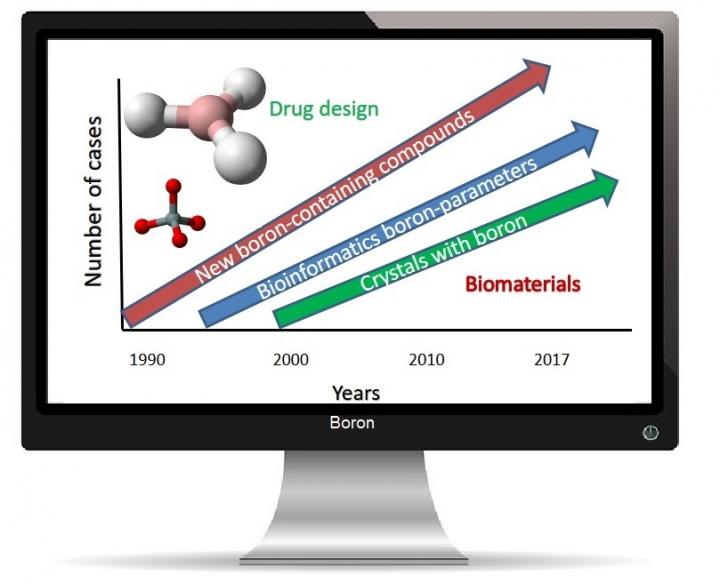
Credit: Marvin Antonio Soriano et al
In the last few decades, research into boron-containing compounds (BCCs) has notably increased in medicinal chemistry. Multiple maladies are now targeted by means of BCCs. Some successful cases are noteworthy in the treatment of cancer and infectious diseases.
Since bioinformatics tools have become a common and efficient methodology for drug design and materials science, their application to the study of BCCs is expected to intensify.That is clearly observed in the development of BCCs for being used in the medical field.
This review compiles information about the use of computational technology to elucidate the chemical-biological effects of BCCs, whether coming from natural sources or drug development strategies.
A broad range of computational approaches facilitate pharmacochemical analysis of BCCs. Most of these approaches focus on the essential parameters of a boron atom, the reasons for an experimental event, and the shared pharmacodynamics, pharmacokinetics or toxic effects of components of a group of BCCs. The article conveys information about pioneering advances and some studies of interatomic interactions between boron and any element related to organic chemistry. It also covers biological effects of BCCs.
Some studies have examined the properties of the boron atom in molecules for designing drugs and biomaterials, while other projects have attempted to identify the best quantitative structure-activity relationship for a specific target. However, the lack of some experimental and theoretical data limit the use of boron in theoretical assays.
A final remark is made as to the potential impact on BCC research that could result from advances in bioinformatics. The potential of new advances in bioinformatics applied to study of BCCs would let us to understand in better way the electromagnetic behavior of the boron atom as well as the biochemical behavior of molecules in its structure under the conditions found in the environment for interactions triggering biological effects.
Some lacking parameters for boron for in silico assays about its biological effects, elemental properties, or parameters related to the element in an organometallic molecule, present an opportunity for research groups studying BCCs around the word.
###
Erik Andrade-Jorge, Ana Karen García-Ávila, Ana Lilia Ocampo-Néstor, José Guadalupe Trujillo-Ferrara and Marvin Antonio Soriano-Ursúa.
Escuela Superior de Medicina, Instituto Politécnico Nacional. Plan de San Luis y Salvador Díaz Mirón s/n, Casco de Santo Tomás, México City 11340, México.
Reference: Andrade-Jorge E. et al. (2017).Advances of bioinformatics applied to development and evaluation of boron-containing compounds, Curr. Org.Chem., DOI 10.2174/1385272821666170427124336
Media Contact
Faizan ul Haq
[email protected]
@BenthamScienceP
http://benthamscience.com/
############
Story Source: Materials provided by Scienmag





